#fallow-grove
Explore tagged Tumblr posts
Note
i just saw ur icon and hello i think we may be twinning !!!
woah!!! blue with pink hair 🤝
17 notes
·
View notes
Text
Le game of Questions
Rules: if you’re tagged, answer question, tag your 3 mutuals, go to 36 closeness questions and pick one you like to ask them.
Let’s go!
@hummingbird-hunter @ahno-nimus @fallow-grove @skulkie
Would you rather lived to 90 y.o. and retain a 30 years old mind or 30 tears old body?
56 notes
·
View notes
Text


WIZARD Wednesday! I lined some sketchies of my WIZARD pals I found in my WIZARD sketchbook! @humm-bird @fallow-grove
#lemme know if these make ya uncomfortable and i can take em down#wizardblogging#wizart#eater draws#skirt go spinny#do i know how to draw the folds of a skirt? no. did i try anyways? yep
171 notes
·
View notes
Text
The Boys Are (Tactically, Therapeutically, and Non-Lethally) Back In Town
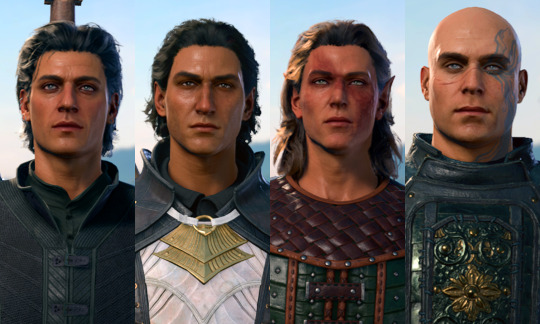
So I know I just made a big whiny deal about trying to make LTB less of an "all-men-all-the-time" corner of BG3 Tumblr, but contradiction is balance, I guess? Seriously though, this multi-Tav run starring three of my Elite Eight (plus a new guy who's seen relatively little screen time) has a real purpose: treating my latest—and most chronically severe—case of restart-itis. Since there's a bit of background and most people won't care, I'll keep the (very text-heavy) rest below the cut.
I've noticed that my restart-itis happens when IRL freelance-design-work sits fallow between projects and when I'm waiting for the next BG3 patch to drop. Ahead of Patch 8, this has been exacerbated by completing the game with a second Tav (because yes Olini finished, modded with her original Horizon Walker subclass, and escaped Faerun-Groundhog-Day for retirement on Shadowheart's farm).
It's also manifested here recently with a few playthroughs that have been excellent for screencaps but (for whatever reason) not compelling enough to totally follow through once I've explored their initial novelty:
Cannor's 22nd run, my first on Tactician (stalled at the créche)
Oops All Elf Ladies, a multi-Tav with Minthara, Kagha, Florrick, and Naoise (stalled after saving the grove)
Wood Elf Minthara (aka Morenthara) with hired gun Fauxrin (human Orin), stalled on Day 3
The latter two remain interesting and I'll surely revisit them (for obvious thirsty reasons), but I feel like I've been neglecting a few non-BG3 creative projects I'd like to do this year (not to mention my first fic that may or may not happen), so I need to place a lot more friction on my BG3 hours before it takes over my life the way it did in fall 2023 when I was stuck at home recovering from Covid.
That's where my boys come in. They're ideally gonna impose friction in this playthrough by helping me take on three concurrent challenges: 1) managing romances for four separate Tavs, 2) trying to go through the game with Non-Lethal Damage always on, and 3) doing it at Tactician level, which I've only tried once before. Three tall orders, to be sure, so there are caveats related to each one:
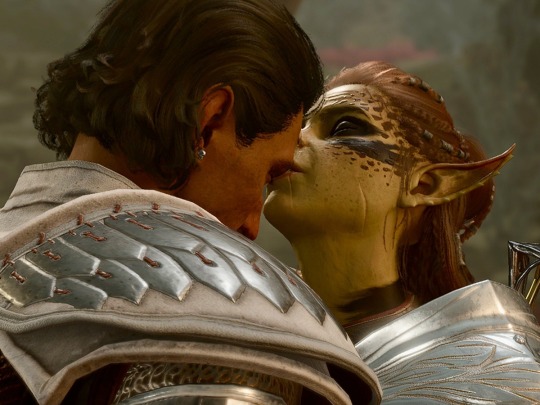
Couples Therapy
Four separate romances is a nightmare to manage. I mean, the last time I tried this I had to make a spreadsheet. It might require lots of party-switching while each guy takes his respective date (Cannor/Minthara, Ruy/Lae'zel, Farago/Shadowheart, Daven/Karlach) out and about to get to know each other better (aka flagrantly mine approval).
This will ideally impose severe limits on what any given adventuring day accomplishes, and might even help me impose a sort of "one in-game day per IRL day" rule on my BG3 time. "Couples Therapy," then, but for my video game addiction and not for my pixel dolls' well-being.

No Needless Death or Cruelty
Non-lethal damage won't help me 100% of the time, of course—for plot reasons some enemies can't just be knocked out—but given the above romance details this will probably be a grove-saving and not grove-raiding run. So Cannor doesn't get his on-screen night with Minthara, but that's been visually buggy for me for a while now (weird torchlight glitches effectively black out much of the scene) and he'll be reduced to a wingman for all of Act 1.
That's fine because this'll be his 23rd escape from the nautiloid, and for a silly reason this might be his last run before retirement (saving some photo-mode excursions): 2023 was the year I released my mandocello-music project of his seven best songs, an accomplishment I'm still really proud of.
A final note on non-lethal damage: it won't apply to undead, because I've always feared and loathed those monsters and, well, they're already dead. Destroy them with fire and radiation! That might become an issue in Act 3 with the 7000 vampire spawn, but we'll burn that bridge when we come to it.
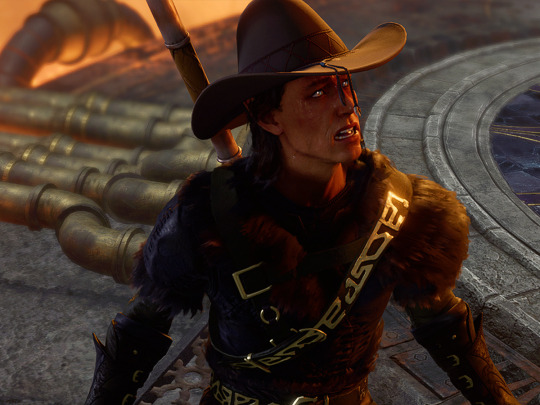
Tactician, For Real This Time
Cannor's 22nd start introduced this to me—in a slightly modified form where I didn't disable Free First Strikes—and I'd had more downed characters more often than ever before. Death is relatively gentle in 5e/BG3, but for obvious reasons it's still a bit stressful, so trying Non-Lethal at this level of difficulty is gonna require much more stealth/subtlety.
That'll manifest in each character's build: Cannor will be Lore this time instead of Swords, so he can focus on control spells and be the "mage" of the party (Gale, Astarion, and Wyll likely won't see much use, if they're recruited at all). Ruy and Farago will need more face skills to mine approval, so their ability scores will shift a bit (and Farago will revert to his 5e class of Rogue, trying to get as close to his 5e Scout subclass as I can). They'll have modded camp clothes galore, and four chests to hoard with, so trading all that extra gear for supplies instead of killing for gold might help too.
And new guy Daven the paladin (more on him later, perhaps) will change from his 5e build of DEX-based Oath of the Open Sea to a more conventional Vengeance/STR build. That'll beef him up a bit (allowing me to use Body Type 4 for the first time as I don't really prefer to play Big Dudes), but it'll balance Karlach a bit so that's fine. He'll still use Umberlee's dye, though, because ex-pirates who target their erstwhile shipmates must maintain some standards.
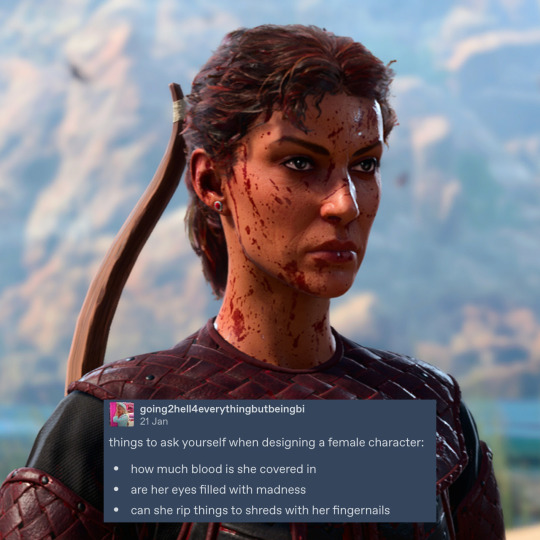
Speaking of pirates—finally, it's not that big of a deal but I justified the all-straight-male run to myself with one very flimsy caveat: when Patch 8 drops, Zafraia the Bandit is waiting in the wings to swash every buckle from Ten-Towns to Athkatla, and coincidentally every other character of mine waiting to play their original 5e subclass (conveniently included in the next patch) are all women: Sianed the Stars druid, Vashti the glamour bard, and Qiranna the hexblade warlock.
So an all-female multi-Tav run will balance out these boys eventually, but for the next several months this blog might be Very Dudely. Thanks in advance for your patient indulgence.
#bg3#baldur’s gate 3#cannor the lost#ruy the reckoner#farago the exile#daven the navigator#ltb boys are back
6 notes
·
View notes
Text
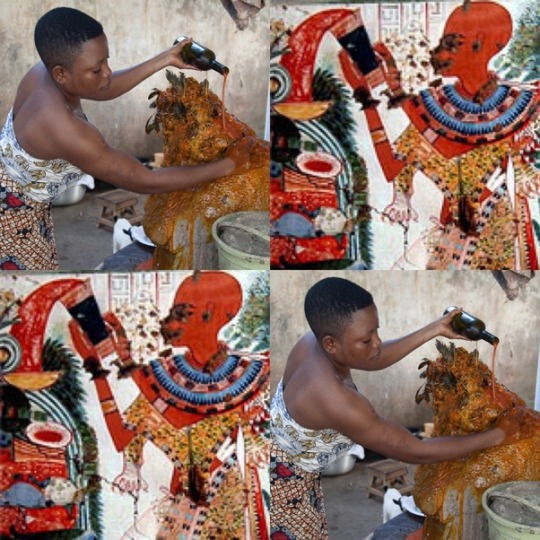
To those who say there’s no connection between West Africa and ancient Egypt you may want to revise such notions.
The oil palm (Elaeis guineensis) is a native of West Africa. It flourishes in the humid tropics in groves of varying density, mainly in the coastal belt between 10 degrees north latitude and 10 degrees south latitude. It is also found up to 20 degrees south latitude in Central and East Africa and Madagascar in isolated localities with a suitable rainfall. It grows on relatively open ground and, therefore, originally spread along the banks of rivers and later on land cleared by humans for long-fallow cultivation (Hartley 1988: 5–7).
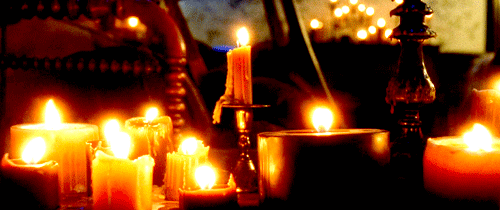
The palm fruit develops in dense bunches weighing 10 kilograms (kg) or more and containing more than a thousand individual fruits similar in size to a small plum. Palm oil is obtained from the flesh of the fruit and probably formed part of the food supply of the indigenous populations long before recorded history. It may also have been traded overland, since archaeological evidence indicates that palm oil was most likely available in ancient Egypt. The excavation of an early tomb at Abydos, dated to 3000 B.C., yielded “a mass of several Kilograms still in the shape of the vessel which contained it” (Friedel 1897).
A sample of the tomb material was submitted to careful chemical analysis and found to consist mainly of palmitic acid, glycerol in the combined and free state, and a mixture of azelaic and pimelic acids. The latter compounds are normal oxidation products of fatty acids, and the analyst concluded that the original material was probably palm oil, partly hydrolyzed and oxidized during its long storage.
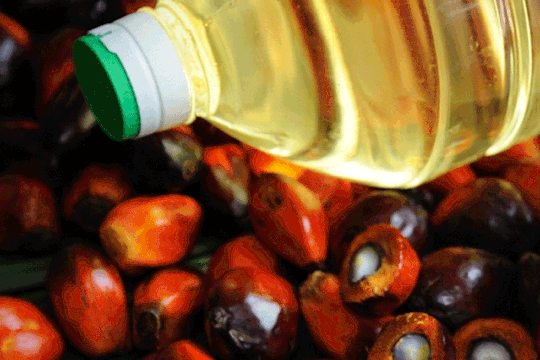
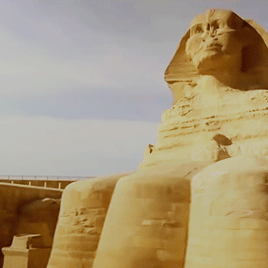
#african#afrakan#kemetic dreams#africans#brownskin#afrakans#brown skin#african culture#afrakan spirituality#vodun#voodoo#palm oil#egyptian#egyptian art#egyptian gods#egyptian history#egyptian mythology#egyptian hieroglyphs#egyptology#archaeology#ancient#ancient egypt#kemet#ancient kemet#kemetic paganism#kemetic#kemetism#sons of kemet#kemeticism#bastet
28 notes
·
View notes
Note
uno reverso
[ top ] - to kiss your muse on the top of their head and then settle my muse’s cheek against it while holding them close
Beneath the waning light of a high white sky, where cloud and stone met, they walked together upon the ramparts of Emyn Arnen – slowly, as one treads through a dream. A wind stirred from the east, whispering through the beech groves in the breath of old sorrows. Yet here, in this high and solemn air, sorrow had begun to loosen its grasp by almost imperceptible degrees.
There was a clarity to Éowyn’s silence that asked not for speech, but for presence alone. It was the silence of a garden left fallow, aching for spring. She stood pale as frost-burnished ashwood, her eyes shadowed not by ghosts, but by memories that had not yet learned how to sleep. Mourning clung to her not as garment, but as something grown from the bone – and still she stood, straight and proud, a blade unbroken.
Faramir did not speak at first, only looked, love warming the slate of his eyes. He feared to cast a pebble into the still waters between them, lest it break the delicate mirror of her solitude. Yet, the desire to reach her – to warm what remained untouched by the fire of the sun – rose in him with a sweetness that ached.
When he paused at the edge of the rampart, and she beside him, eyes fixed on the far horizon where Ithilien lay with green promise, he let his arm move – tentatively, reverently. No words preceded it, for words would have been too base. He simply gathered her into his arms and held her.
Then, as if guided by something older than speech or thought, he bent his head, letting his lips rest – light as leaf-fall – upon the crown of her hair. A kiss not of conquest, but of covenant, of gentleness where there had once been war. Faramir closed his eyes, pressing his cheek softly to where his lips had lingered, his arms around her not as fetters but as a hearth. Not to cage, but to comfort.
“I would not bind you,” he murmured, his voice ever gentle and low. “Not even to my heart. Least of all, to this place. Only, grant me this – that I might love you as you are, Éowyn, and as you may yet become. Through every season, through the constant turning of the world.”
#real talk i get so confused by ' my muse / your muse ' memes#if it doesn't use sender / receiver i'm lost#all that to say i hope this is what you imagined! 💕#⪼ faramir × éowyn — you and i have both passed under the wings of the shadow / and the same hand drew us back#gravityslingshot
3 notes
·
View notes
Text



Request 4 @fallow-grove: a (found) family of sparklecats
#yay yay its finally done!!!!!!!!!! it might not look like much but this took me 7 hours of on and off work!!!!!!!!!!!#i tried a whole bunch of new stuff with this#obviously i used a new brush and shaded!!!!! for once!!!!!!!!!! yay!!!!!!!!!!!!!! and the shading is why it took so long#so here it is!!!!! a (found) family of sparklecats!!!!!!! (ones half bunny but it still counts)#this was SO FUN. i love drawing even though its hard#i'll probably draw these guys again n make em 4 real ocs because i really love how they all turned out#i really hope these r sparkly enough btw O_O" i was stressing a lil bit about that#nevertheless i hope u like it ^u^!!!!#eyestrain#gif warning#sparklecat#funky cool art#sparklefur#kittys awesome ocs#sparkledog
49 notes
·
View notes
Text
Picrew chain!
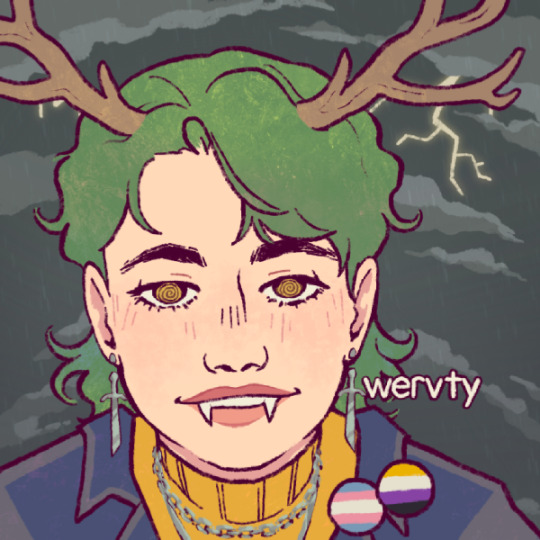
@archangel-fucking-judas @fallow-grove @muckmage @elisabewitch @skulkie @loveaetingkids @d1nosaurpower @reiki-tsubetai @wizardpigeon @raupeka
45 notes
·
View notes
Text
Will We Have to Pump the Great Lakes to California to Feed the Nation? (New York Times)
Coast to coast, our food producing regions, especially those stretching from the southern Great Plains across the sunny, dry Southwest, rely heavily and sometimes exclusively on groundwater for irrigation. And it’s disappearing — fast.
What happens to the nation’s food production if the groundwater runs out altogether? Unless we act now, we could soon reach a point where water must be piped from the wetter parts of the country, such as the Great Lakes, to drier, sunnier regions where the bulk of the nation’s food is produced. No one wants unsightly pipelines snaking across the country, draining Lake Michigan to feed the citrus groves of the Central Valley. But that future is drawing closer by the day, and at some point, we may look back on this moment and wish we’d acted differently.
For over a century, America’s farmers have overpumped groundwater, and now, as the world warms and the Southwest becomes drier, the situation is only growing more dire. Rivers are slowing to a trickle, water tables are falling, land is sinking, and wells are drying up. Each year, roughly 25,000 more farmers fallow their fields, putting both food and water security in the United States at risk.
States are aware there is a problem — many are trying to sustainably manage their groundwater. But it’s not clear how successful these efforts have been. My research team has found that groundwater depletion is accelerating in the Central Valley, in spite of California’s Sustainable Groundwater Management Act. In Arizona, groundwater is only managed in less than 20 percent of the state, leaving a free-for-all in the state’s unmanaged areas.
The United States has no plan for the disruptions that will befall our food systems as critical water supplies dwindle, causing the price of some foods to skyrocket and bringing us closer to the time when we may have to consider pipelines to replenish or replace depleted groundwater.
Americans, particularly those living in places like the Great Lakes region, have already shown that they have little stomach for infrastructure projects that would move their local water to remote locations, even if it is to produce the food they eat every day.
It’s not just the political climate that makes tapping water resources in the East such an undesirable prospect. We’ve built systems of canals to move water around California and the Colorado River basin, but constructing a transcontinental pipeline or river diversion, at the scale required to sustain U.S. agriculture, would be staggeringly more complex, expensive and environmentally disruptive.
They would require significant landscape changes and human displacement. And because water is so heavy, it is extremely expensive to transport. Building the necessary conveyances would require decades of planning, have major environmental consequences and cost taxpayers astronomical sums — easily tens to hundreds of billions of dollars, and far more when you take the human and environmental costs into account.
5 notes
·
View notes
Text
GOBLONIA TOMORROW (if im not withered away by my illness) :0
ran by my big shot homie @fallowgrovetv @fallow-grove and streamed on their account on twitch: Fallowgrove
players that be playing: @iiumiium @exotic-duck
and our lovely player on nerd leave (come back my man we miss you 😔): @m1xieup
JOIN US AROUND 5pm (PST) I SWEAR ITS FUN
8 notes
·
View notes
Text
Places Prompts for Writing My DAI-AU
Please copy and paste the whole line. Thank you!
Dragon Age: Awakening-Era
avaar crypt in Vigil’s Keep
Hero’s office in Vigil’s Keep
training grounds in Vigil’s Keep
bedroom in Vigil’s Keep
parapets in Vigil’s Keep
Morrigan's eluvian
Amaranthine streets
Elven ruins in Ferelden
Forest Campsites in Ferelden
Gwaren alienage
Gwaren teyrns hall
DAI: Haven
Dungeons (Haven)
chantry (Haven)
war table (Haven)
training grounds (Haven)
forge (Haven)
wilderness (Haven)
healers hut (Haven)
tavern (Haven)
tunnels (Haven)
temple of sacred ashes (Haven)
DAI: Hinterlands
witch woods (Hinterlands)
red lyrium tunnels (Hinterlands)
vallamar (Hinterlands)
the crossroads (Hinterlands)
the farms (Hinterlands)
Templar camp (Hinterlands)
DAI: Fallow Mire
Fallow Mire camp
Fallow Mire bog
Fallow Mire fort
DAI: Crestwood
Crestwood camp
Crestwood wyrm hole/Solas grove
Crestwood dwarven caverns
Crestwood New Crestwood
Crestwood fort
Crestwood Hawke's hideaway
Crestwood dragon nest
Crestwood red lyrium quarry
DAI: Storm Coast
Storm Coast beach
Storm Coast caves
Storm Coast dwarven port
Storm Coast blades of hessarion camp
Storm Coast dwarven caves
Storm Coast the woods
DAI: Emerald Graves
Emerald Graves refugee camp
Emerald Graves on the road
Emerald Graves Vallasdahlen
Emerald Graves elgarnans bastion
Emerald Graves knights tomb
Emerald Graves wolf statue camp
Emerald Graves haunted manor
Emerald Graves great bear
Emerald Graves red Templar camp
Emerald Graves venatori camp
Emerald Graves slaver caves
DAI: Exalted Plains
Exalted Plains camp
Exalted Plains Dalish camp
Exalted Plains scorched battlefield
Exalted Plains var Bellanaris
Exalted Plains the river
Exalted Plains Ghilannains grove
DAI: Emprise
Emprise occupied suledin
Emprise cleared out suledin
Emprise frozen river
DAI: Halamshiral
Halamshiral alienage
Halamshiral upper quarter
Halamshiral winter palace
DAI: Val Royeaux
Val Royeaux cafes
Val Royeaux curio shops
Val Royeaux alleys
Val Royeaux alienage
DAI: Western Approach
Western Approach oasis
Western Approach desert
Western Approach tainted lands
Western Approach occupied fort
Western Approach still ruins
Western Approach tevinter prison
Western Approach camp
DAI: Hissing Wastes
Hissing Wastes
DAI: arbor wilds
temple of mythal
well of sorrows
mythals altar
5 notes
·
View notes
Text
as you leap from stone footholds
abandoning a damp plateau
for wanton vernal currents
do you think of broken bones?
while you plummet from above
in flight from that grinning black hole
to desperate reunion
do you think of open wounds?
as ridges crumple behind
and you greet those clutching eddies
sworn to choke sharp déjà vus —
do you think of forfeit flames?
can you fathom gravity?
when you cast yourself from caution,
eyes alight on unmarred clay,
do you think of shattered skies?
as rushes whisper records
of matryoshka horizons
while you lie rimed in velvet
do you think of cloven knots?
within impending nightmares
damned to nurture blooming sorrow
cocooned steadfast in zenith
do you think of fallowed groves?
and in that winking mirage
where homeward motes lilt and glimmer
amid starsoaked succulents—
do you think of cobbled streets?
the palms ferry melodies
for repossessed eternities:
wreathed in sleeping greenery
do you think of mended wings?
2 notes
·
View notes
Text

I.8.8 But did the Spanish collectives innovate?
Yes. In contradiction to the old capitalist claim that no one will innovate unless private property exists, the workers and peasants exhibited much more incentive and creativity under libertarian socialism than they had under the private enterprise system. This is apparent from Gaston Leval’s description of the results of collectivisation in Cargagente in the southern part of the province of Valencia:
“The climate of the region is particularly suited for the cultivation of oranges … All of the socialised land, without exception, is cultivated with infinite care. The orchards are thoroughly weeded. To assure that the trees will get all the nourishment needed, the peasants are incessantly cleaning the soil. ‘Before,’ they told me with pride, ‘all this belonged to the rich and was worked by miserably paid labourers. The land was neglected and the owners had to buy immense quantities of chemical fertilisers, although they could have gotten much better yields by cleaning the soil …’ With pride, they showed me trees that had been grafted to produce better fruit. “In many places I observed plants growing in the shade of the orange trees. ‘What is this?,’ I asked. I learned that the Levant peasants (famous for their ingenuity) have abundantly planted potatoes among the orange groves. The peasants demonstrate more intelligence than all the bureaucrats in the Ministry of Agriculture combined. They do more than just plant potatoes. Throughout the whole region of the Levant, wherever the soil is suitable, they grow crops. They take advantage of the four month [fallow period] in the rice fields. Had the Minister of Agriculture followed the example of these peasants throughout the Republican zone, the bread shortage problem would have been overcome in a few months.” [Anarchist Collectives, p. 153]
This is just one from a multitude of examples presented in the accounts of both the industrial and rural collectives. We have already noted some examples of the improvements in efficiency realised by collectivisation during the Spanish Revolution (section I.4.10). Another example was the baking industry. Souchy reported that, ”[a]s in the rest of Spain, Barcelona’s bread and cakes were baked mostly at night in hundreds of small bakeries. Most of them were in damp, gloomy cellars infested with roaches and rodents. All these bakeries were shut down. More and better bread and cake were baked in new bakeries equipped with new modern ovens and other equipment.” [Op. Cit., p. 82] In Granollers, the syndicate “was at all times a prime-mover. All kinds of initiatives tending to improve the operation and structure of the local economy could be attributed to it.” The collectivised hairdressing, shoe-making, wood-working and engineering industries were all improved, with small, unhealthy and inefficient workplaces closed and replaced by larger, more pleasant and efficient establishments. “Socialisation went hand in hand with rationalisation.” [Gaston Leval, Collectives in the Spanish Revolution, p. 287] For more see sectionI.8.6 as well as section C.2.8 (in which we present more examples when refuting the charge that workers’ control would stifle innovation).
The substantial evidence available, of which these examples are but a small number, proves that the membership of the collectives showed a keen awareness of the importance of investment and innovation in order to increase production, to make work both lighter and more interesting and that the collectives allowed that awareness to be expressed freely. The collectives indicate that, given the chance, everyone will take an interest in their own affairs and express a desire to use their minds to improve their lives and surroundings. In fact, capitalism distorts what innovation exists under hierarchy by channelling it purely into how to save money and maximise investor profit, ignoring other, more important, issues. As Gaston Leval suggested, self-management encouraged innovation:
“The theoreticians and partisans of the liberal economy affirm that competition stimulates initiative and, consequently, the creative spirit and invention without which it remains dormant. Numerous observations made by the writer in the Collectives, factories and socialised workshops permit him to take quite the opposite view. For in a Collective, in a grouping where each individual is stimulated by the wish to be of service to his fellow beings, research, the desire for technical perfection and so on are also stimulated. But they also have as a consequence that other individuals join those who were first to get together. Furthermore, when, in present society, an individualist inventor discovers something, it is used only by the capitalist or the individual employing him, whereas in the case of an inventor living in a community not only is his discovery taken up and developed by others, but is immediately applied for the common good. I am convinced that this superiority would very soon manifest itself in a socialised society.” [Op. Cit., p. 347]
Therefore the actual experiences of self-management in Spain supports the points made in section I.4.11. Freed from hierarchy, individuals will creatively interact with the world to improve their circumstances. For the human mind is an active agent and unless crushed by authority it can no more stop thinking and acting than the Earth can stop revolving round the Sun. In addition, the Collectives indicate that self-management allows ideas to be enriched by discussion.
The experience of self-management proved Bakunin’s point that society is collectively more intelligent than even the most intelligent individual simply because of the wealth of viewpoints, experience and thoughts contained there. Capitalism impoverishes individuals and society by its artificial boundaries and authority structures.
#anarchist society#practical#practical anarchism#practical anarchy#faq#anarchy faq#revolution#anarchism#daily posts#communism#anti capitalist#anti capitalism#late stage capitalism#organization#grassroots#grass roots#anarchists#libraries#leftism#social issues#economy#economics#climate change#climate crisis#climate#ecology#anarchy works#environmentalism#environment#solarpunk
6 notes
·
View notes
Note
Behold, the collection!
Catgirlification of Muck, amongst other things, circa 2023, ft. @fallow-grove, @archangel-fucking-judas, and, of course, me and you.
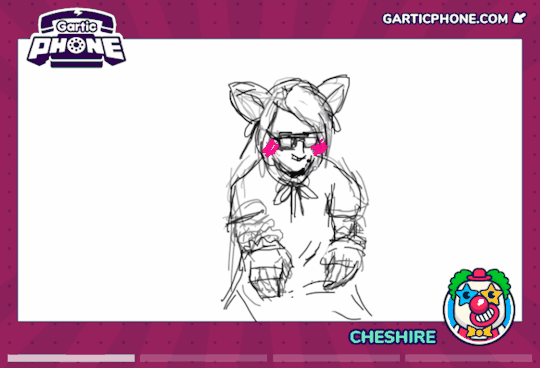
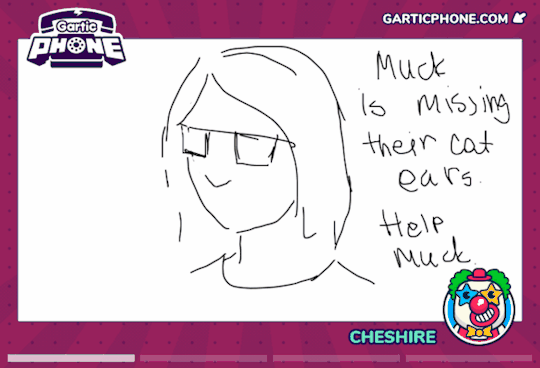
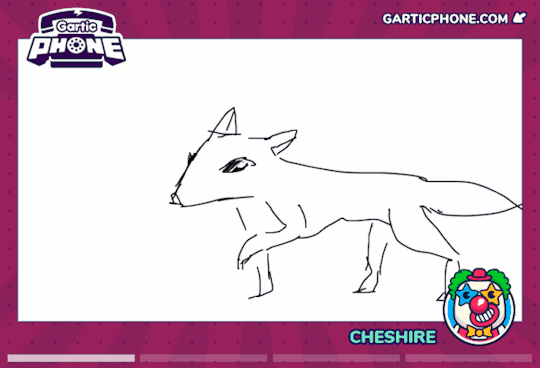
constantly i am tormented by these people bullied so so badly and they're all so mean and people should sympathise with me and send me their power so i can throw more rocks at them in retribution
9 notes
·
View notes
Text
and the mulberry tree in the grove just outside C.S.L.’s window shone like fallow gold
4 notes
·
View notes
Note
Hello Fallow Grove. dot Com.
i am not a website! hello!
3 notes
·
View notes